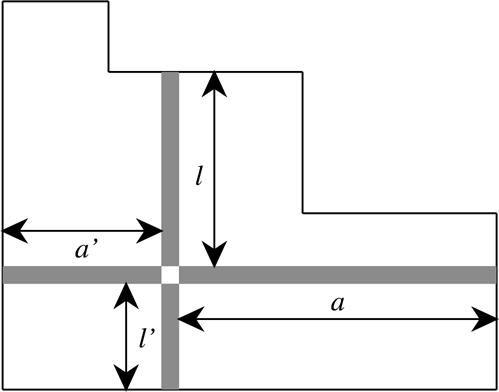| HOME: |
|
| BACK: | More qt-analogs |
The (q,t)-Catalan sequence is defined by setting
 |
where the sum is over all partitions of n. All products and sums
in the µth summand are over the cells
of µ and the parameters
l,
l',
a,
a'
denote the leg, coleg,
arm and
coarm of agiven
cell. That is, for a given cell s, when µ
is depicted bythe French convention (see the figure below) l,
l',a,a'
give the number of cells that are strictly north, south,
east
andwest of s in µ. The symbol ![]() is used to express that this product omits the corner cell with l'=a'=0.
is used to express that this product omits the corner cell with l'=a'=0.
 |
On the surface this formula appears to define only a rational function
of q and t. Nevertheless, computer data and representation
theoretical
considerations lead us to conjecture that C_n(q,t) evaluates
for all n to a polynomial with non-negative integer coefficients
and total degree ![]() .
In fact, a perusal of the tables in the appendix quickly reveals that the
coefficients of the resulting polynomial always add up to the familiar
Catalan number
.
In fact, a perusal of the tables in the appendix quickly reveals that the
coefficients of the resulting polynomial always add up to the familiar
Catalan number
 |
By specializing the values of q and t in the (q,t)-Catalan numbers one also recovers the q-Catalan numbers.
The q, t-Catalan numbers arise naturally in the study of diagonal harmonics. They are conjectured to be the coefficient of the sign representation in the Frobenius series for the diagonal harmonics.
The (q,t)-Catalan numbers are now known to be polynomials in q and t
and there exists a proof in the article
Identities and Postitivity Conjectures for some remarkable Operators
in the Theory of Symmetric Functions (to appear), François
Bergeron, A. Garsia, M.
Haiman, G. Tesler
This paper also explains the connections
between the space of diagonal harmonics and the Macdonald polynomials with
the operator Nabla.
The question that these polynomials have non-negative integer coefficients is still unsettled.
Adapeted from the paper:
A REMARKABLE $q,t$-CATALAN SEQUENCE
AND $q$-LAGRANGE INVERSION, Adriano
Garsia, Mark Haiman